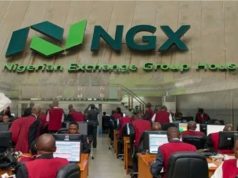…Nigeria’s banks’ dollar deposit inflows are dwindling because of low oil revenue, volatile foreign investment inflows and reduced remittances from abroad
…Moody’s rated banks have bolstered their dollar deposit bases and liquid assets since 2016, but scenario analysis highlights vulnerabilities
WED, JULY 01 2020-theG&BJournal- Nigeria’s banks are facing foreign currency shortages because of low oil prices, volatile foreign inflows and lower remittances amid the pandemic, threatening to renew foreign currency liquidity pressures that blighted them during a previous oil crisis in 2016-2017, Moody’s Investors Service said in a report today.
“Lower dollar inflows at a time when foreign currency borrowing will likely be more expensive for Nigerian banks will strain their foreign currency funding, despite substantial improvements compared to 2016,” said Peter Mushangwe, Analyst at Moody’s. “Our moderate scenario where foreign-currency deposits decline by 20%, while loans remain constant, would increase rated banks’ funding gap to NGN1.5 trillion [$3.8 billion], and to NGN1.9 trillion [$5.0 billion] under our severe-case scenario of 35% foreign-currency deposit contraction, creating acute funding challenges.”
Oil and gas exports contribute about 90% of Nigeria’s foreign currency revenue. Crude oil now trades around $40 a barrel, substantially lower than the average price of $65 in 2019 and $72 in 2018. Moody’s forecasts a range between $35-$45 over the next 12 to 18 months. Prices within that range, or lower, in the second half of the year would lead to renewed dollar shortages at the banks.
Moody’s-rated Nigerian banks reduced their foreign currency funding gap to a combined NGN354 billion ($984 million) in 2019 from NGN1.436 trillion ($5.5 billion) in 2016. The ratio of foreign-currency loans to foreign-currency deposits at Moody’s rated banks dropped to 106% at the end of 2019 from 135% in 2016 as banks cut back on dollar loans while building up their dollar deposits. The smaller funding gap will enable the banks to better withstand unforeseen deposit withdrawals and likely higher borrowing costs. However, in the event of foreign currency deposits contracting by 20% or more, banks’ funding gaps will be significant.
|twitter:@theGBJournal|email: info@govandbusinessjournal.com.ng|









